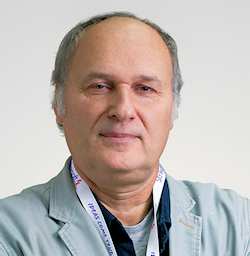Advice for organisations that want to start capitalising on IoT
5 quick insights into the world of IoT, by Strikersoft’s IoT expert Alexander Mruga.

1. What is your definition of IoT?
As I see it, IoT is a ubiquitous connectivity between objects and between objects and the cloud, extending to the world of human activity.
2. Why are we seeing such strong development in IoT right now?
Recent advances in low-power wireless communication are the main motivation for the multitude of objects around us to become part of the IoT. I see the future of IoT as spanning everything in the range of “smart dust” to smart homes. By that I mean everything from a myriad of tiny elements working together to monitor things like light, temperature and vibration, with each element no larger than a few millimetres – just like dust – to large, distinguishable devices like the intelligent fridge.
3. How do we make objects “smart”?
In my opinion, the first thing you need as the main engine for turning ordinary objects into “smart” objects is a fundamental knowledge of physics, mathematics, chemistry, biology, economics, etc. IoT technology only presents us with the opportunity to upgrade objects. We have to find a way to capitalise on this opportunity to realise IoT’s true potential. I also like one of the fundamental ideas behind IoT, in which objects send data directly to the cloud based back-end and then send them to the front-end without any extra transformation or human intervention needed.
4. And in the future?
At some future point, data generated by IoT will be processed and, ultimately, converted directly into benefits and profit. As a result, we can now talk about a new era for business, in which machine-to-machine (M2M) communication between smart objects creates a surplus value without the need to increase the levels of human or other resources used, such as energy. In the ideal scenario, perfectly tailored IoT would be used everywhere day and night to make the world a better place.
5. Do you have any more advice for organisations that want to start capitalising on IoT?
Remember that IoT is a technology that relies on progress in both hardware and software. The best way to start your IoT project is always to engage a professional with skills and experience in both areas. Another good first step is to study the success stories of other organisations and to be inspired by their achievements. Successful examples and application notes make a good starting point for your own solution and help give you a better chance of success. As a newcomer to IoT, I would suggest making minimal changes to well-documented examples in adjusting your solution to suit your own specifications. After the first positive trials, you can start inventorying all the related objects to reveal possible improvements you can make to the objects themselves and to the business processes that depend on them.
